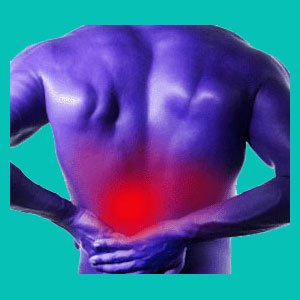
Many patients ask whether to use ice or heat for herniated discs, since they are not sure which treatment is better to relieve their pain. While heat and ice are good symptomatic treatments for some types of back pain, they will certainly do nothing at all to resolve the underlying condition causing disc pain.
This article will examine the roles of ice and heat therapy in treating back, neck and sciatica pain syndromes. We will investigate if either modality has any efficacy for herniated or degenerated discs and detail the benefits which might be expected using either ice or heat home remedies.
Using Ice or Heat for Herniated Discs
Ice is an anti-inflammatory agent which will reduce swelling and temporarily retard circulation when applied. Additionally, ice is an anesthetic agent and will reduce pain in muscular tissues. However, ice will also enact a reflex response as the body reacts to the cold by expanding blood flow to the affected area.
Heat increases cellular activity and circulation. Heat loosens tight muscles and helps in the removal of cellular waste products, due to increased blood flow.
For most injuries, ice is recommended for the first 24 to 48 hours and heat is recommended from then on. Ice should be left on for 15 to 20 minutes at a time and the area should be allowed to warm for at least 30 minutes between applications. Heat can be applied liberally and is especially effective when wet heat is utilized.
These recommendations may be more effective for acute back injuries, although they may be nothing at all to relieve pain directly coming from herniated intervertebral tissues. Ice and heat will help to minimize the trauma felt by other structures, such as the more superficial muscles, tendons and ligaments in the affected region.
Ice or Heat for Disc Pain Treatment
Ice and heat are not usually effective for resolving actual disc-related pain. Pain due to a pinched nerve or spinal stenosis related to a herniated or degenerated disc, will not generally respond significantly to ice or heat.
However, actual disc related pain is quite rare and many patients do receive considerable relief from using ice, heat or a combination of the 2. In these cases, this symptomatic herniated disc relief provides some evidence that the abnormal disc condition might exist, but is not the actual source of pain.
Many patients who enjoy relief from ice or heat are actually suffering from ischemia, which definitely responds to changes in temperature. Others may be afflicted by soft tissue concerns which may benefit from ice and/or heat, such as muscular injuries or fibromyalgia.
Tips on Using Ice or Heat for Herniated Discs
Neither ice, nor heat, will help to reduce the neurological effects of a herniated disc. Most patients who experience pain relief are actually enjoying the benefits of the treatment on surrounding muscular tissues. Sometimes, a disc-enacted neuropathy condition might be the source of this muscular discomfort, due to innervation issues, but many times, the disc is completely blameless when it comes to back muscle pain.
Patients who have chronic muscular soreness or experience muscle spasms are often suffering from oxygen deprivation, not disc pain. These ischemic conditions generally improve significantly using ice and heat, but unfortunately, the effect is extremely temporary. If this represents your own back pain experience, it is time to consider the possibility that your pain might not be disc-related at all. In these circumstances, think about losing the ice pack and heating pad and choosing to explore alternative medicine for herniated discs.
Remember, after acute injury, there are likely to be several types of tissue which have suffered trauma, not just the known herniation. Ice and heat may help to bring about resolution of these varieties of non-spinal pain, which explains the efficacy following a severe injurious event.
Herniated Disc > Herniated Disc Treatments > Ice or Heat for Herniated Discs





